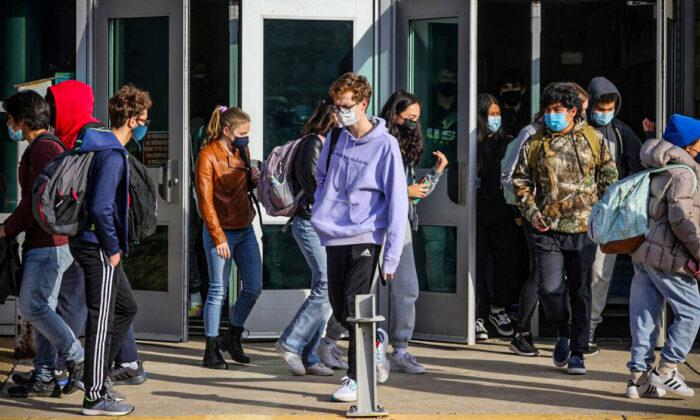More than four in ten U.S. high school students felt persistently sad or hopeless in 2021, according to a CDC field survey released late last week.
The number of high school students with persistent feelings of sadness or hopelessness has grown steadily from 26.1 percent in 2009, to 36.7 percent in 2019, according to CDC data.
“We know from other research that youth with poor mental health are more likely to struggle with school and grades, decision making, and their physical health,” Jonathan Mermin, director of the National Center for HIV, Viral Hepatitis, STD, and TB Prevention, told reporters during a conference call on March 31.
“Furthermore, mental health problems in youth are often associated with other behavioral risks such as drug use, experiencing violence, and higher risk sexual behaviors,” Mermin added. “And these problems can have lasting negative effects well into adulthood.”
More than one in three students surveyed said they experienced poor mental health during the COVID-19 pandemic, according to the data.
The CDC survey was funded through the Coronavirus Aid, Relief and Economic Security (CARES) Act.
“Our data make it clear that young people experience significant disruption and adversity during the pandemic and are experiencing a mental health crisis,” Kathleen Ethier, director of CDC’s Division of Adolescent and School Health, told reporters during a conference call on March 31.
“This data and others like it show us that young people and their families have been under incredible levels of stress during the pandemic.”
More than half of the students surveyed (55 percent) said they experienced emotional abuse by a parent or another adult in their home. More than one in ten (11 percent) said they experience physical abuse at home “including hitting, beating, kicking, or physically hurting the student,” according to the data.
“These data echo a cry for help,” Debra Houry, CDC acting principal deputy director, said in a statement. “The COVID-19 pandemic has created traumatic stressors that have the potential to further erode students’ mental wellbeing. Our research shows that surrounding youth with the proper support can reverse these trends and help our youth now and in the future.”
In the survey, the CDC asked for the first time whether high school students experienced racism. Asian students topped the list, with nearly two in three (64 percent) saying they’ve experienced racism. More than half (55 percent) of black and multiracial students also reported experiencing racism.





